Warren Cann is best known as a founder member of ULTRAVOX. Born in Vancouver, he began a love of electronics and music that led him to moving to the UK to make his fortune as a drummer. He auditioned for SPARKS but didn’t get offered the job.
Eventually though in 1974 via a small ad in Melody Maker, he joined the band TIGER LILY who were later to become ULTRAVOX!
Led by Dennis Leigh aka John Foxx, their first two albums ‘Ultravox!’ and ‘Ha-Ha-Ha’ fused the art school spirit of THE VELVET UNDERGROUND, ROXY MUSIC and David Bowie with the pioneering Teutonic inventiveness of KRAFTWERK and NEU!
Working with producers Brian Eno and Steve Lillywhite, Cann became fascinated with the use of guitar effects to treat drums and played around with early rhythm units as ULTRAVOX! started to incorporate more electronics into their work.
For their third album ‘Systems Of Romance’, ULTRAVOX (now with no exclamation mark!) found their perfect bedfellow in the legendary producer Conny Plank who had previously worked with KRAFTWERK and NEU! It was Plank who said “I like synthesizers when they sound like synthesizers, not when they sound like natural instruments. I like them to have their own colours. The strange areas of colours that you can do with synthesizers is what’s interesting for me, not just copying an acoustic instrument.”
Despite the newly focused sound, John Foxx departed in 1979 to go solo. Following a brief hiatus during which main synthesist Billy Currie worked with Gary Numan and VISAGE with whom he met Midge Ure, the diminutive Glaswegian then joined Cann, Currie and bassist Chris Cross to become the most commercially successful version of ULTRAVOX. Over a period of four years, they conquered Europe with their brand of symphonic synthesized rock with classic albums such as ‘Vienna’, ‘Rage in Eden’, ‘Quartet’.
Along with the rest of the band, Cann’s continued innovative use of new technology integrated with conventional instruments pushed boundaries and challenged perceptions of how electronics could be used in music. Shedding the sweat and armbands image of the rock drummer, he became the metronomic meister of the rhythm box.
As well as using drum machines, Cann made use of early manually operated electronic percussion such as the Claptrap as heard on ‘New Europeans’, and the Synare III which provided the thunder sound on Vienna’. He developed a sequencer for use in tandem with Chris Cross’ Minimoog which featured on the single ‘The Thin Wall’ among others.
And he was also one of the first drummers to acquire the Linn LM-1, the first programmable digital drum computer. Indeed, Cann had eventually acquired so much equipment that it was all packed into a huge complex next to his drum kit and nicknamed ‘The Iron Lung’ by the rest of the band. At the height of ULTRAVOX, ‘The Iron Lung’ contained the Simmons SDSIII, SDSV and SDSVII drum synthesizers, Roland TR77 and CR78 drum machines, a Linn LM-1, a LinnDrum, the Sequential Circuits Drumtraks and various effects processors like the Roland Space-Echo.
Despite their success and an appearance at Live Aid, ULTRAVOX imploded, with Cann being forced to leave the band in 1986 before recording of what became the disastrous ‘U-Vox’ album and their eventual demise. Continuing to work as a musician but eventually transferring to guitar and keyboards, he moved to Los Angeles where he still resides. Fast forward to 2008 and the classic line-up of Cann, Cross, Currie and Ure reformed to celebrate their musical legacy on the ever expanding ‘Return To Eden’ tour.
While he was in Scandinavia playing festivals with ULTRAVOX during the summer, Warren Cann took time out to talk to ELECTRICITYCLUB.CO.UK about his innovative career and the current reunion.
During Foxx and Ure eras of ULTRAVOX, you harnessed the development of synthesizer technology and electronic percussion, pioneering its use in both studio and live work. How do you feel about your role in all that?
I’m very proud of it. It was very hard work – at the time, there were so many obstacles between what I wanted to do and what the technology would allow you to do… very frustrating! A lot of ingenuity went into trying to coax the machines to give the results desired as, in those days, the machines hadn’t yet realized they were instruments.
Can you remember what your first drum machine was and what it was like to use?
Of course. It was a Roland TR-77. No memory, no tempo display, no individual outputs, no programmability! It was incredibly primitive by today’s standards but at the time, this was about as high-tech as you could get for a drum machine.
Is it true you wired a volt meter in series with your drum machine and stuck tape on the dial to mark the appropriate tempos for each individual song?
Controllable and repeatable tempo settings are vital when using a drum machine. The TR-77 had no tempo display to tell you the beats per minute (BPM), it only had a fader to control the tempo and the sensitivity was very coarse; you only had to look at it to make the speed jump by a huge amount. Trying to get tempo changes from song to song in a live setting was very hit-or-miss… almost always miss!
To solve this, I had a second potentiometer wired up with the first one to give a ‘Coarse/Fine’ set of controls. This gave a much more useable degree of control. Then, to actually work out what the tempo would be, I connected a volt meter with an LED readout to the clocking circuit… this gave a DC voltage and I could just read the display and make a note of the number – it was an arbitrary voltage, but it corresponded directly to the speed and that solved the problem. If the correct speed of the song gave a voltage reading of 11.45 volts, then I could simply adjust the fader till the clock voltage read that value!
Mr X had its origins in the John Foxx-era of ULTRAVOX but with you on lead vocals and you wrote a fair proportion of the lyrics for the ‘Vienna’ album. When John Foxx left and before Midge Ure joined, was there ever any consideration given to you perhaps becoming the new lead vocalist of ULTRAVOX?
Yes, I wrote about half of the lyrics for the ‘Vienna’ album. No, there was no thought of me being the lead vocalist at that time.
Your acquisition of the Linn Drum Computer must have been quite a revelation? In your opinion, how did this and machines like it change popular music forever?
Yes, I got the Linn LM-1 when I was working with Hans Zimmer on our HELDEN album. While still very primitive, I’d consider it the first true modern drum machine and it was like going from a VW Beetle to a Ferrari. It’s hard to give such a big question a brief answer. Drum machines lent a new dimension to music on two fronts; one, the hypnotic element given by perfect unwavering tempo, and two, the ability to endlessly layer, edit, and re-edit rhythm tracks.
What of your contributions to ULTRAVOX songs are you personally most proud of?
As a band, ULTRAVOX never wrote music unless we were all together in the same room – this is very rare. We would throw ideas back and forth in infinite combinations until we’d achieved what we wanted to hear. We all influenced each other. As such, it’s almost impossible to pick out specific pieces or themes. I’m proud that my ideas and attitudes contributed to making the whole greater than the sum of its parts. Still, if I had to pick just one… I’d say when I played the ‘Vienna’ rhythm to the band and said: “How about this?”
ULTRAVOX rhythmically had always been an even mix of real drums and drum machines but on 1984’s ‘Lament’ album, there was noticeably more programmed percussion than on previous albums. Was there any particular reason for this? And did it ultimately lead to the tensions which led to you leaving in 1986 prior to the recording of the ‘U-Vox’ album?
No particular reason, it just worked out that way. And it certainly didn’t lead to the reasons I left.
What did you do after that? Was a solo music career ever a consideration?
I made some demos which were not well received by Chrysalis… they thought the tracks were too much like Iggy Pop which I took as a great, if entirely unexpected, compliment! I did a lot of session work; 7000 Danses by INDOCHINE, lots of television shows for Kim Wilde and produced demos for aspiring bands. I joined a band called THE SONS OF VALENTINO and had a great time, but then I left to play guitar and keyboards for THE HUW LLOYD-LANGTON GROUP. I later moved to Los Angeles to pursue a future in film scoring.
How did you get the call about the 30th Anniversary ULTRAVOX reunion and what was your initial reaction?
Like the others, I received an e-mail from a previous manager, Chris O’Donnell, who was now with Live Nation.
He said it was their opinion at LN that now just might be a good time to consider reforming and playing some shows. To our surprise, we all agreed with him!
The DVD footage of you meeting the guys again for the first time at the rehearsals for ‘Return To Eden’ brought a lump to my throat. How was it all for you?
Yes, it was quite emotional. And very surreal… we were all aware of the many years that have passed, yet at the same time, it was like only yesterday.
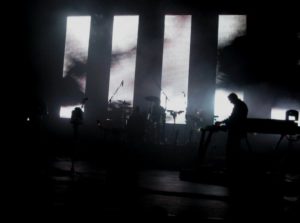
How did you cope with getting back into the rhythm of playing drums again after over 20 years?
To be absolutely honest, far more easily than I’d anticipated! Like riding a bicycle…
Did you have much opportunity to do any of the drum programming for the tour or had that been pretty much completed before you joined full band rehearsals. How did you find using the ‘new’ technology?
I did the programming for the songs that required it during the first week or so of rehearsals, then fine-tuned as necessary. As for the new technology, you have to see it from my point of view; I was merely learning some new software, I didn’t have to learn what was going on – I merely had to learn the eccentricities of a sequencing program I hadn’t used before, the principles are all the same. The greatest benefit was being able to condense and ‘miniaturize’. Instead of having a huge rack of hardware to make noise with, it could all be contained within a laptop.
What probably had the greatest impact was not our ability to streamline the amount of equipment we had to deal with – great as that was – but being able to eliminate the old-style on-stage monitoring system.
Instead of having a smaller version of the out-front sound system pointing at us so we could adequately hear each other, we used the ‘In-Ears’ system of super hi-fi ear phones which gave each of us an individual and repeatable mix for each song.
It cut our soundcheck time from two or three hours to an easy fifteen minutes. It also enabled us, when necessary, to not do a soundcheck at all (most festivals, for example). Fantastic!
And when you finally got on stage, how did you feel about the ecstatic reaction you were getting at the shows? What were the personal highlights for you?
It was amazing! Truly! The personal highlights were going onstage together at the first show in Edinburgh (… another surreal moment!) and playing at Hammersmith in London (we always considered that venue as ‘home’).
What next for you? Will there be further tours from ULTRAVOX or even the possibility of new material?
As I write this, we’re playing concerts in Sweden, Finland and the UK. As for further tours and/or new material… you’ll just have to wait and see!
ELECTRICITYCLUB.CO.UK gives its sincerest thanks to Warren Cann
https://www.facebook.com/UltravoxUK/
Text and Interview by Chi Ming Lai
13th October 2010


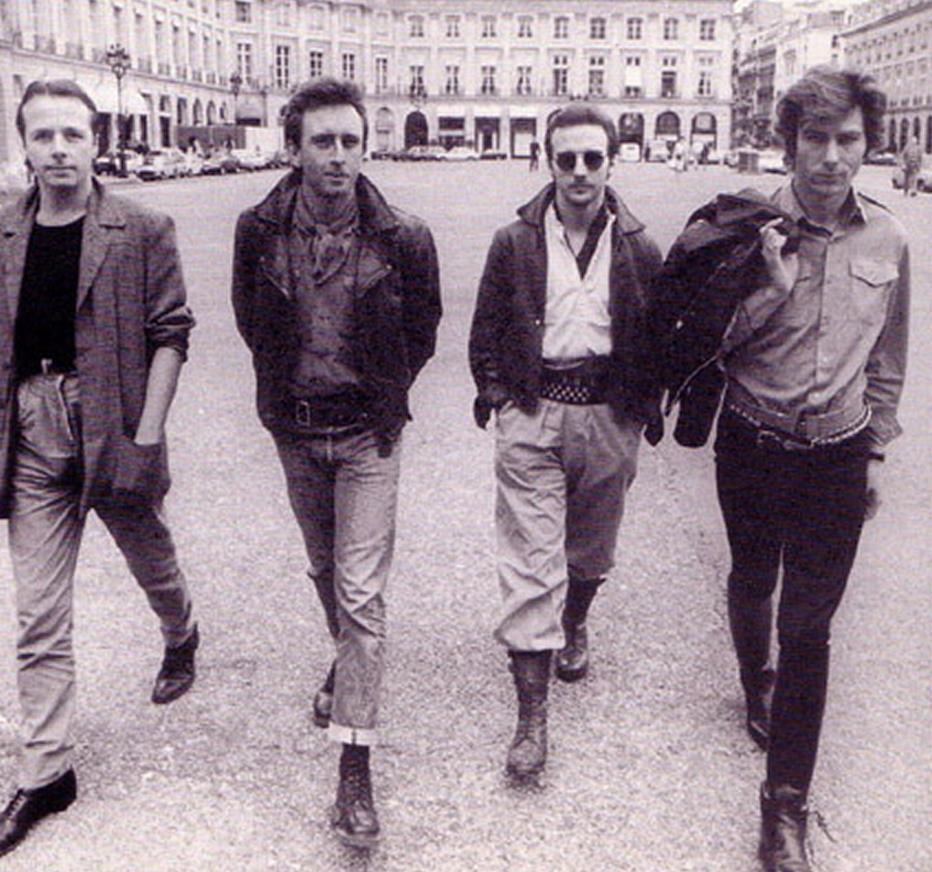
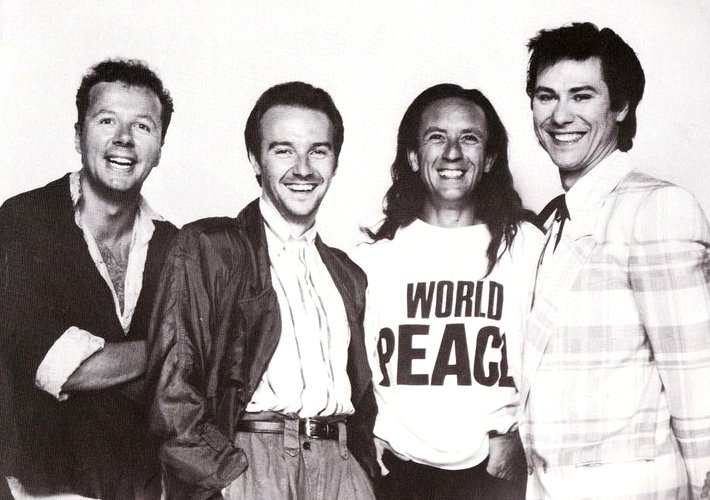
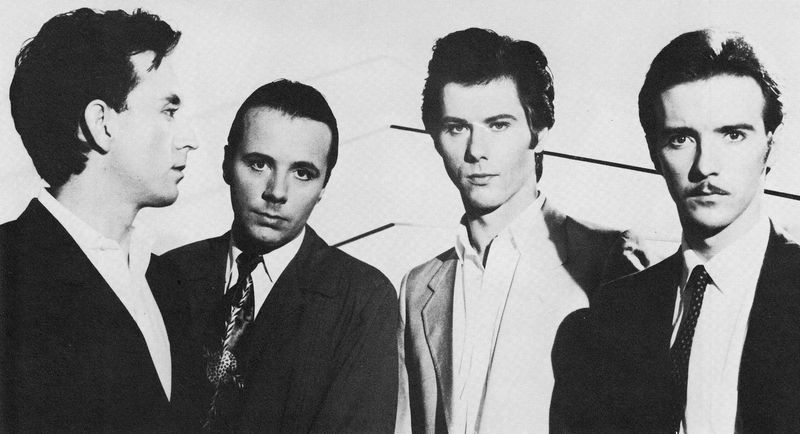
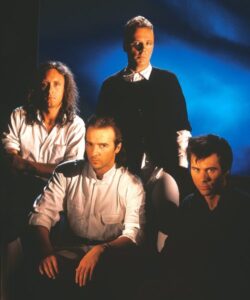
Follow Us!